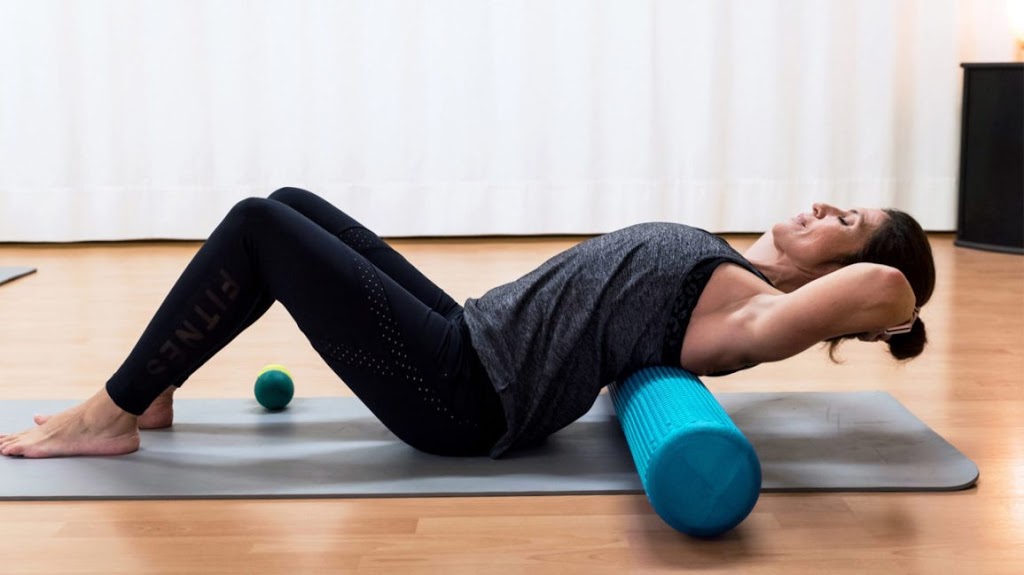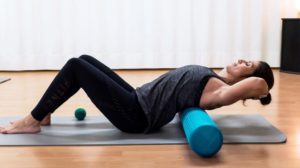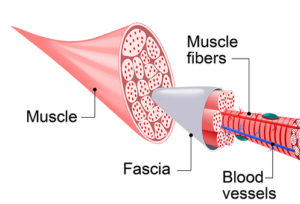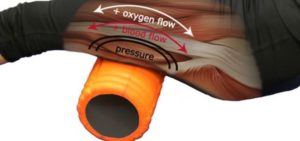You may be feeling the effects of either doing too much exercise during quarantine or the lack of activity from not getting out and about as much as you used to. The good news is that either way a foam roller could become your new best friend!
What Is Foam Rolling?
Foam rolling is a type of self-myofascial release (SMR). Muscles and fascia can become tight from overuse, repetition, body mechanics, and weakness. In response, the body may protect itself by limiting your range of of motion. Myofasical release techniques, such as foam rolling, manipulate tissue in order to return it to the proper position and looseness. The roller applies pressure, helping to manipulate and break up “knots”, stiffness, and tension that can form in your muscles and tissue.
What Is Fascia?
Fascia is a dense connective tissue that surrounds every muscle, joint, and organ in the body. It holds muscles in place and helps them glide through their range of motion. There are three types:
- Superficial – lies just beneath the skin
- Deep – penetrates and surrounds muscle tissue
- Visceral – helps keep vital organs in place
Benefits of SMR:
Foam rolling is an activity that alleviates delayed onset muscle soreness (DOMS), but it actually has a wider range of benefits. It targets the muscles and fascia and may help to free up tension, stiffness, and soft tissue restrictions which will have a positive effect on how your body feels. Below are benefits of foam rolling:
1. Improves Joint Range of Motion & Performance
Exercise, injury, and lifestyle can cause your fascia to tighten and cause trigger points, also called “knots”. These restrict both mobility and performance. Foam rolling can break up knots and return muscles and soft tissue back to normal, increasing range of motion.
2. Relieves Muscle Soreness and Improves Tissue Recovery
Fascia provide your muscles with support and protection, so overuse, injury, or even inactivity can cause it to tighten. Foam rolling breaks up those knots which can actually help increase circulation to your muscles and connective tissues. With better circulation and more oxygen, your muscles can recover faster and you’ll experience less muscle soreness.
3. Relaxes Muscles
Foam rolling applies direct pressure on tight muscles and knots which helps them relax and release tension. Rolling over your muscles and trigger points creates a similar effect that a occurs during a deep tissue massage.
4. Lengthens Muscles & Prevents Injury
Foam rolling lengthens muscles and breaks down scar tissues that can prevent you from reaching your deepest stretch. It allows muscles to return to their normal length, which in turn allows for proper muscle function. And when your muscles are efficiently stretched and function properly, there is far less risk of injury.
5. Correct Muscle Imbalances
Since foam rolling can relax tight muscles, improve range of motion, and lengthen muscles, it allows your body to perform better. It helps correct muscle imbalances by relaxing the overactive, tight muscles, and allowing proper movement to strengthen the weak, under active muscles.
Guidelines to Start Foam Rolling
- Should be done before static or dynamic stretching activities to help improve the tissue’s ability to lengthen during stretching activities.
- Can also be done as part of the cool down, performed especially on tissues identified as overactive
- Slow and steady is key!
- Start by rolling along the length of the muscle, then you can follow up with small rolls over any spots that are tender.
- Slowly roll the targeted area until the most tender spot is found. Hold on that spot while relaxing the targeted area and discomfort is reduced, between 30 to 90 seconds.
- Take long breaths as you roll, as this helps to increase blood flood and oxygen to your muscles.
- It can be slightly uncomfortable when you start, especially if you are new to foam rolling or when you roll over muscles that feel tight.
- Go lightly if you find an area particularly painful – decrease the pressure slightly, or work on the surrounding tissue instead.
- If you find that your muscles are too sensitive, it might be time to take a rest day and allow yourself to recover.
Be on the lookout as JOHO will be releasing a 4-week foam rolling series in the coming weeks! We’ll be sending out workout cards with different foam rolling stretches along with 4 different videos walking members through how to foam roll different parts of the body.
-Paulina Le
Health Fitness Specialist



